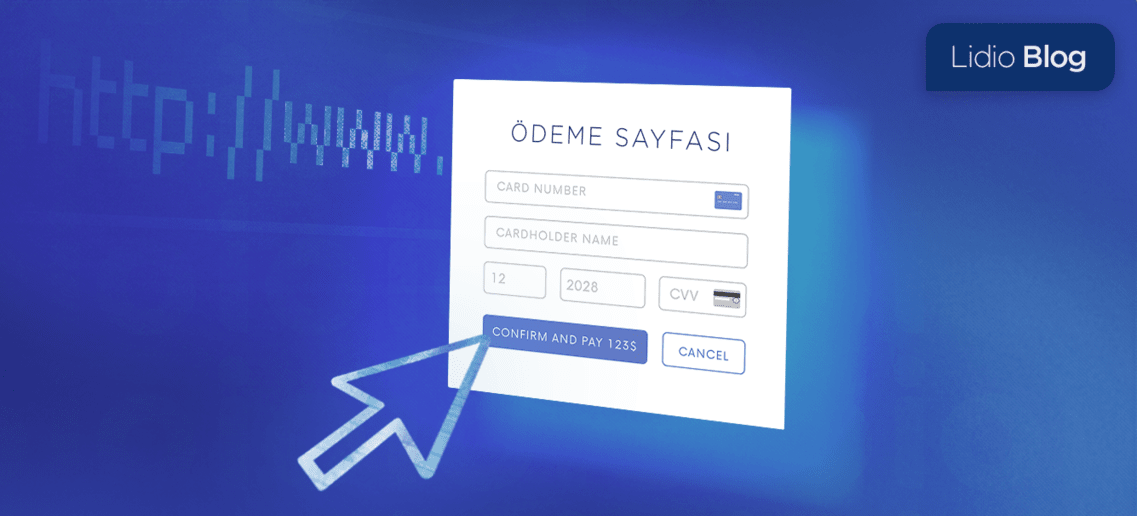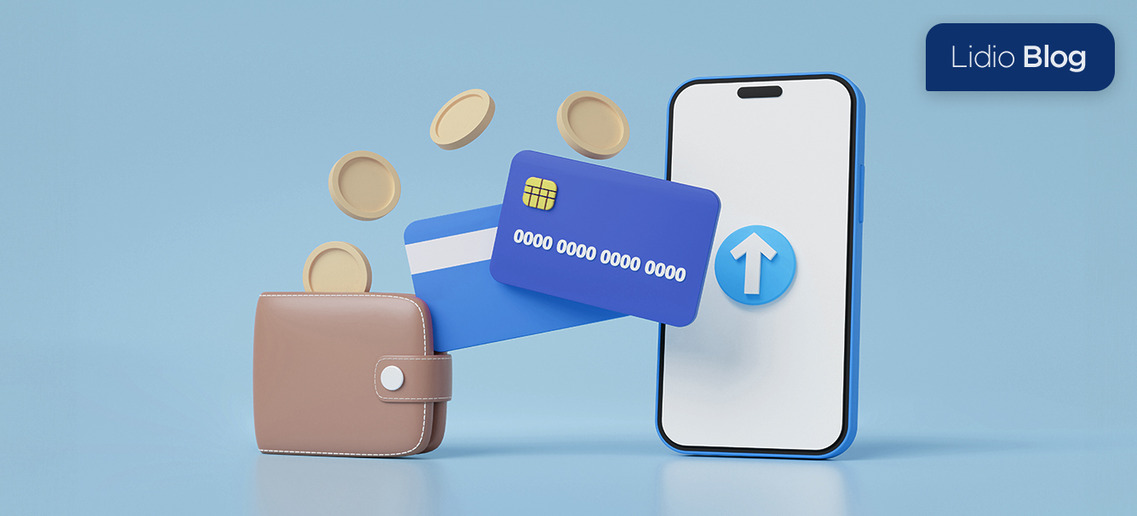
Tek Tıkla Ödeme Nedir E-Ticarette Dönüşüm Oranlarını Artırmanın Yeni Yolu
Tek Tıkla Ödeme Nedir E-Ticaret’te Dönüşüm Oranlarını Artırmanın Yeni Yollarını Keşfedin...
CVV Kodu Nedir? Neden önemlidir? Öğrenmek için blog yazımızı zirayet edin!

CVV (Card Verification Value), kredi ve banka kartlarının güvenliğini artırmak amacıyla kartın fiziksel olarak mevcut olmadığı online alışverişlerde kullanılan bir güvenlik özelliğidir. Kart sahiplerinin finansal güvenliğini korumak için tasarlanmış bu üç veya dört haneli özel kod, kart bilgilerinin kötü niyetli kişilerce kullanılmasını önlemeye yardımcı olur. CVV kodu, kart bilgilerinizin çalınması durumunda bile, fiziksel kartınız olmadan işlem yapılmasını zorlaştırarak ekstra bir güvenlik katmanı sağlar.
CVV2, kredi kartlarında bulunan ve kartın fiziksel olarak mevcut olmadığı online alışverişlerde ekstra güvenlik sağlayan bir güvenlik özelliğidir. CVV2, aslında CVV'nin güncellenmiş ve daha güvenli bir versiyonudur.
CVV kodu (Card Verification Value), kredi ve banka kartlarının arka yüzünde yer alan, genellikle üç ya da dört haneli özel bir güvenlik numarasıdır. Bu kod, kart bilgilerinin çalınması veya kopyalanması durumunda bile, fiziksel kartın olmadığı online alışverişlerde bir güvenlik katmanı olarak hizmet eder.
CVV kodunu almak için özel bir işlem yapılması gerekmez. Bankaya gitmeden de bu kodu almanız mümkündür. Fiziksel kartınız üzerinde yazılı olan CVV kodu, kolayca bulunabilir. Kod, kartın arka yüzünde, imza şeridinin hemen üzerinde veya yanında yer alır.
Kredi kartı kullanıyorsanız CVV numarasını öğrenmek için kartın arka yüzeyine bakmanız gerekir. Bu yüzeyde zemin renginden farklı bir renkte şerit yer alır. Bu şerit üzerinde 3 haneli veya daha uzun bir numara bulunur. Eğer sayı 3 haneli ise aradığınız kod bu sayıdır.
Banka kartı CVV öğrenme süreci de benzer şekilde, kartın arka yüzünde bulunan ve imza alanının hemen yanındaki numaralardan biridir.
CVV kodu nerede yazar sorusunun cevabı, kartın arka yüzeyidir. İmza alanının sonunda, kart numarasından ayrı olarak yer alır.
CVV kodu ile alışveriş yapılırken, online ödemeler sırasında kart numarası, son kullanma tarihi ile birlikte CVV kodu da istenir. Bu, işlemi güvence altına alır.
CVV kodu ile alışveriş yapmak, ek bir güvenlik önlemi olduğundan dolayı güvenlidir. Ancak, kart bilgilerinizin ve CVV kodunuzun güvende tutulması önemlidir. CVV kodunu kimseyle paylaşmamanız tavsiye edilir. Güvenliğiniz açısından bu kodu sadece sizin bilmeniz gerekir. Başkalarıyla paylaşmadığınız sürece CVV kodu ile alışveriş yapmak güvenli mi sorusunun cevabı evet olur. Bilgilerinizin güvenliği bu kod ile sağlanır. Bu kodu başkasıyla paylaştıysanız ve güvenliğiniz açısından değiştirmek istiyorsanız bu mümkün değildir. Yalnızca kartınızı yenileyerek CVV kodunu değiştirebilirsiniz. Bunun için bankanızla iletişime geçerek gerekli işlemin yapılmasını sağlayabilir, güvenli bir şekilde alışveriş yapmaya devam edebilirsiniz.
Aynı amaç doğrultusunda kullanılan CVV ve CVC kodu arasındaki ilk fark açılımlarıdır. CVV açılımı Card Validation Value, CVC açılımı ise Card Validation Core olarak karşınıza çıkar. Bu iki kod da kartınızın güvenliği için kullanılır. Aralarındaki değişikliğin sebebi ise farklı şirketler tarafından isimlendirilmeleridir. Visa kart için geçerli olan kod CVV, MasterCard için geçerli olan kod ise CVC olarak bilinir. Bu numaralarla aynı kategoriye giren CID kodu ise American Express kartları ile kullanılır. CVV ve CVC kodu arasındaki farklar nelerdir kolayca bulunabilir. CVV kodu genellikle üç haneli bir numara ilken CVC kodu dört hanelidir. Kartınızın manyetik şerit kısmına basılan ve fiziki işlemlerde mutlaka doğrulanması gereken kod CVV kodudur. CVC kodu ile farklı özelliklere sahip olmalarının yanı sıra ortak amaçları işlem güvenliğinin sağlanmasıdır.
CVV kodu, kartsız olarak gerçekleştirilen işlemlerde sahtekarlığın önüne geçmek için tasarlanır. Online alışveriş ödemesi yaparken sadece size ait olan ve kimseyle paylaşılmayan bu kod talep edilerek izinsiz işlem yapılmasına karşı koruma sağlanır. Kart sahibi olmayan kişiler bu kodu bilmeden herhangi bir işlem yapamaz.

Tek Tıkla Ödeme Nedir E-Ticaret’te Dönüşüm Oranlarını Artırmanın Yeni Yollarını Keşfedin...

CVV Kodu Nedir? Neden önemlidir? Öğrenmek için blog yazımızı zirayet edin!...

Provizyon Nedir? Provizyon Ne İçin Kullanılır? Öğrenmek için blog yazımızı ziyaret edin!...

QR Kod Nedir? QR Kod Ne İçin Kullanılır? Öğrenmek için blog yazımızı zirayet edin!...

Linkle ödeme nedir, linkle ödeme sistemi nasıl çalışır, avantajları nelerdir, ve linkle ödeme nasıl alınır merak ediyorsanız detaylı bilgi için blog yazımızı okuyun!...

Ödeme sistemleri, online mağazalarınızda müşterilerinizden ödeme almak için kullanılan finansal teknolojilerin tümüne verilen addır. Detaylı bilgi için web sitemizi ziyaret edin!...

Ödeme sayfası nedir, sayfa güvenliği nasıl anlaşılır, ödeme sürecinin güvenli olduğundan emin olma yolları nelerdir hakkında detaylı bilgi için blog yazımızı okuyun. ...

Startup Nedir? Startup nasıl kurulur öğrenmek için blog yazımızı zirayet edin!...

Check Out Nedir? Neden önemlidir öğrenmek için blog yazımızı zirayet edin!...

Dijital Cüzdan Nedir? ? Neden önemlidir öğrenmek için blog yazımızı zirayet edin!...

E-Tahsilat Nedir? E-Tahsilat Ne İçin Kullanılır? Öğrenmek için blog yazımızı zirayet edin!...

İnternet alışverişinde tüketicilerin hakları nelerdir, kabul edilen sözleşmeler neyi ifade eder detayları ile öğrenmek için blog yazımıza göz atın!...

Sanal POS hakkında tüm bilmeniz gerekenler: Öğrenmek için blog yazımıza göz atın!...

Sepeti terk etme oranları işletmeler için neden önemlidir, nasıl minimize edilir öğrenmek için blog yazımıza göz atın!...

Geleneksel ödemelerden açık bankacılığa finansal serbestleşme nedir ve neden önemlidir öğrenmek için blog yazımıza göz atın!...

Uluslararası ödemeler nasıl gerçekleştirilir, hangi yöntemler kullanılır öğrenmek için blog yazımıza göz atın!...

Ödeme alma sürecinde tahsilatları tek ekrandan yönetmek işletmelere ne gibi avantajlar sağlar öğrenmek için blog yazımıza göz atın!...

ERP nedir, POS ve hesap hareket takibi nasıl yapılır öğrenmek için blog yazımıza göz atın!...

Issuer, Acquirer ve PSP kavramları nelerdir, PSP seçimi neden önemlidir öğrenmek için blog yazımıza göz atın!...

İnternetten yapılan alışverişlerde dolandırıcılığa karşı kullanılan güvenlik önlemleri nelerdir öğrenmek için blog yazımıza göz atın!...

E-ticarette online satış yapmanın püf noktaları nelerdir, tüketici deneyimi nasıl iyileştirilir öğrenmek için blog yazımıza göz atın!...

Açık bankacılık nedir, işletmelere nasıl avantajlar sağlar öğrenmek için blog yazımıza göz atın!...

Güvenli online alışverişin şifresi: 3D Secure Ödeme nedir, ne işe yarar öğrenmek için blog yazımıza göz atın!...

Kredi kartı, kapıda ödeme, havale/kredi, mobil ödeme gibi alternatif ödeme yöntemleri nelerdir, nasıl kullanılır öğrenmek için blog yazımıza göz atın!...